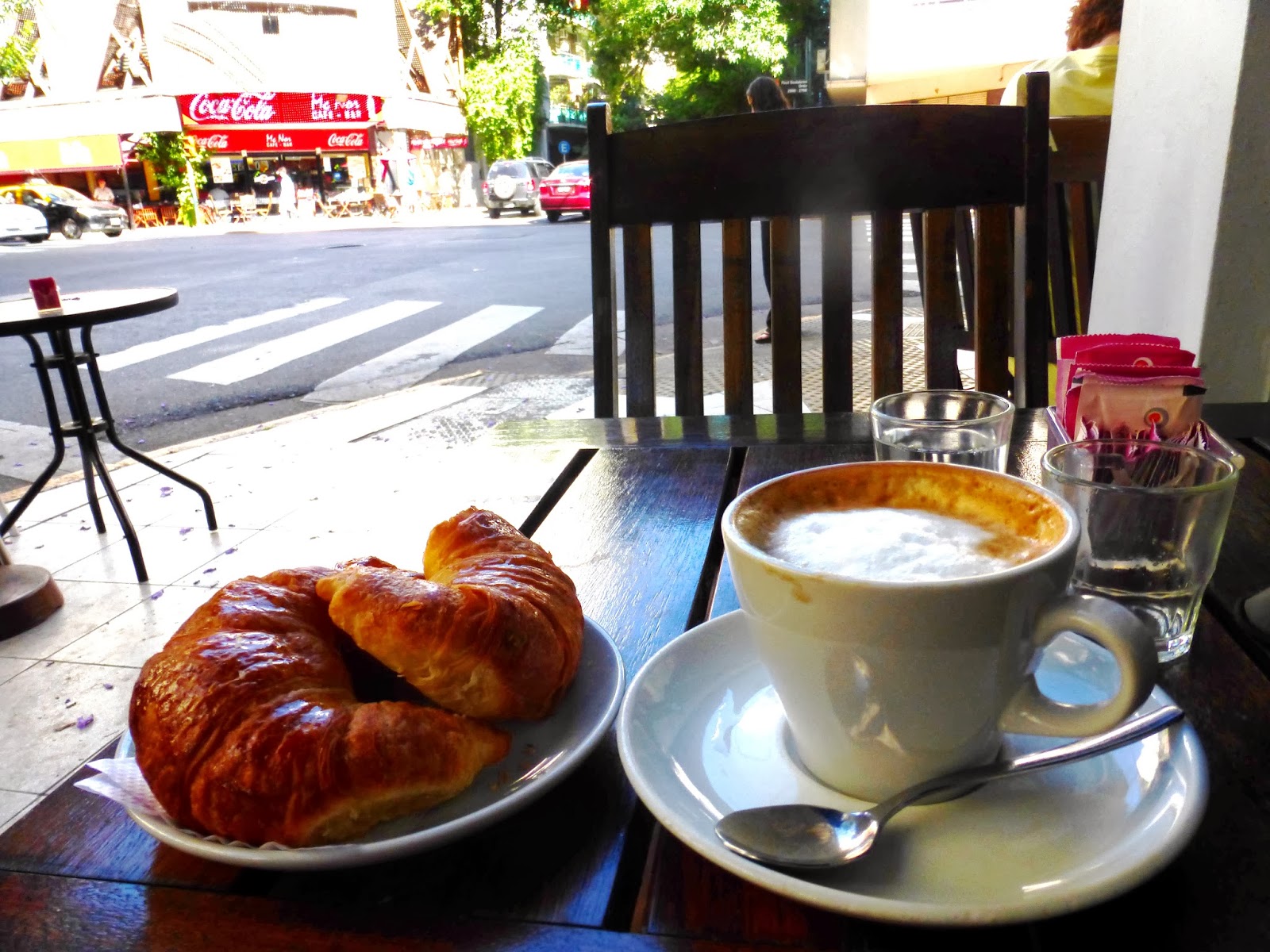 |
| On a Tuesday evening, Porteños enjoy a glass of wine while watching couples refine their tango steps |
Leaving from the South of Peru, a logical plan would have been to start by the North of Argentina, stop by wine-country Mendoza, to visit the birthplace of Che Guevara in Cordoba, to finally arrive in Buenos Aires, where I expected my stay to be of about two weeks.
But my illogical instinct told me to go straight to Buenos Aires - where I ended up staying five weeks.
After having visited parts of the US, Ecuador, Peru, Argentina and Brazil, Buenos Aires was certainly the best part of my trip. I hope the reasons that brought me -and got me to stay- in the Argentinian capital will incite you to one day visit it for yourself.
 |
| Every Monday night, Cafe Vinilo offers tango lessons, followed by a free show of Argentinian folklore music |
In Buenos Aires, art is incredibly valued and accessible to all. On any day of the week at any time of the year, one is sure to find a quality concert, dance show, play, or tango lesson at very modest prices, if not for free.
I was in my element.
During the day, fully-equipped bands will use the sidewalk as a stage, attracting dozens -or hundreds- of passersby, who eventually allow their bodies to sway to the rhythm of the music.
 |
| Tourist-oriented tango in the neighbourhood of La Boca |
In the evening, guitarists opt for the metro as a music venue, and select popular Argentinian songs in the hope of inciting metro riders to sing-a-along.
One Friday night, I witnessed to my great surprise an entire metro car of people singing along to every song the fired up musician -armed only with a guitar- was leading, barely pausing between the songs. Another time, a 20-year old break-danced on the wavering floor of the metro car... where else does this happen?

Book lovers will not want to leave.
With 200 bookstores, 70 libraries, and scores of kiosks, it is no wonder that Buenos Aires was inaugurated as the World Book Capital of 2011 by UNESCO. Here, demand is so high that certain downtown libraries stay open all night... it is difficult to tell whether the placement of small coffee counters inside these libraries are a cause or a consequence of the extended hours.
(As a side note, tourists should try to avoid libraries located right in the middle of downtown - the books there will be two or three times the price of books in libraries just a bit further away.)
 |
| One should be aware that a cup of coffee at Cafe Tortoni includes the price of the place itself - it is not cheap. |
The most famous is Cafe Tortoni, inaugurated in 1858, where the hundreds of portraits hung on the walls are proof that famous figures such as Jorge Luis Borges, Carlos Gardel, and even Albert Einstein have once sat at these tables.
 |
| Thin crust, wood oven-baked pizza with mozarela, sun-dried tomatoes, and arugula - irresistible. |
The excellent food of Buenos Aires encompasses a mix of Italian, Spanish and French culinary influences. Pizzas, empanadas (salted pastries stuffed with meat or cheese), and coffee with medialunas (small croissants) are the food of choice of Porteños (such are labeled the residents of Buenos Aires) - and they are all fantastic. Pizzerias and bakeries are actually on every. Single. Corner.
Outdoor seating is found everywhere, and nearly every cafe exhibits a deal of the like: "Coffee and 3 medialunas for 25 pesos (5$)".
 |
| Coffee with medialunas |
At a short distance from downtown, a 360-acre ecological reserve offers a wonderful getaway from the concrete of the city. It has a river, a bike path, and a surprisingly large area of tall grass. It is free to the public, and open all night when there is full moon.
Buenos Aires is a city so big that Porteños themselves often ask each other for directions, which they exchange without the slightest sign of annoyance.
It is a city of music and books, of coffee and cigarettes, of pizza and wine.
This is Buenos Aires ; and it holds every right to its widely spread reputation.
Sounds like a magical city. Hope to visit it soon. Cheers!
ReplyDelete